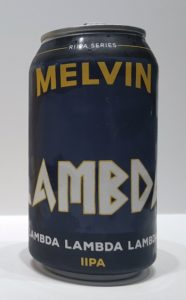Top 10 Triple IPAs brewed in the United States
This Top Ten Triple IPA list is from the U.S. Open Beer Championship, Great American Beer Festival, and World Beer Cup. Triple IPA is a massively hoppy beer of at least 9.5% ABV with outrageous amounts of dry hops, hop flavor, malt flavor, alcohol and bitterness. The Triple IPA may be similar to a Double IPA in hop character, but is differentiated from the style by a thick, syrupy body accented by intense hop resins that make it a heavy sipping beer. AB: 9.5-18%. IBU: 65+

1.Lambda Lambda Lambda IIPA – Melvin Brewing – Wyoming
2. Pliny The Younger – Russian River Brewing – California
3. Dire Wolf IPA – Alameda Brewing – Oregon
4. Hoptimum Triple IPA – Sierra Nevada Brewing – California
5. Doubble Hopulus IPA – Pike Brewing – Washington
6. Simtra – Knee Deep Brewing – California
7. 120 Minute IPA – Dogfish Head Brewery – Delaware
8. Green Bullet – Green Flash Brewing – California
9. RuinTen IPA – Stone Brewing – California
10. Hopfetti – Starr Hill – Virginia
History of Triple IPAs
The Triple IPA, a bold and intensely hoppy beer style, emerged as an evolution of the India Pale Ale (IPA) in the early 2000s during the American craft beer revolution. As brewers pushed the boundaries of the Double IPA, which itself amplified the hop bitterness, alcohol content, and malt backbone of the traditional IPA, the Triple IPA was born to take things further. Pioneering breweries like Russian River Brewing Company and Dogfish Head led the charge, with Russian River’s Pliny the Younger, first released in 2005, becoming a benchmark. This style typically boasts alcohol by volume (ABV) ranging from 9% to 12% or higher, with extreme hop profiles delivering piney, citrusy, and resinous flavors. The Triple IPA was a response to hop enthusiasts’ demand for bigger, bolder beers, cementing its place in craft beer culture as a symbol of excess and innovation.
By the 2010s, Triple IPAs gained a cult following, with breweries across the United States experimenting with new hop varieties and brewing techniques to enhance aroma and flavor while balancing the style’s intense bitterness. The rise of hazy or New England-style IPAs also influenced some Triple IPAs, introducing juicier, fruit-forward profiles alongside the traditional West Coast-style’s sharp bitterness. Despite their popularity, Triple IPAs remain a niche style due to their high cost, complex production, and palate-wrecking intensity, often released in limited batches or at beer festivals. Today, they continue to captivate hopheads and challenge brewers, embodying the relentless creativity of the craft beer movement while sparking debates over whether the style pushes excess too far.
Top 10 Beers in America – Ales Lagers Specialty Barrel Aged